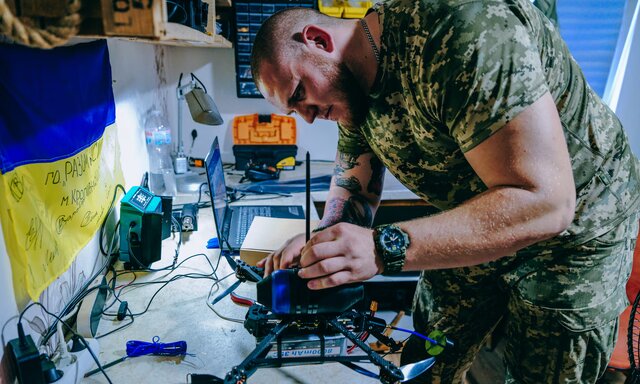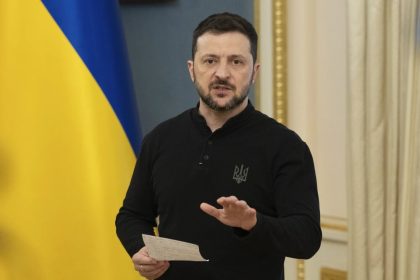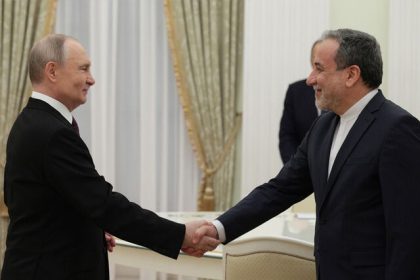battle in the sky; The revolution of drones in the Ukrainian war
The English publication reports, small and cheap drones known as “FPV” (first person view) with a speed of about 60 kilometers per hour, have become very common in the war in Ukraine and have turned from a “new phenomenon” into a “weapon”. are preferred.
According to RCO News Agency, the British “Guardian” newspaper wrote: “Denis, a soldier of the Khyzhak brigade in the Ukrainian army, describes a new type of war. “Now there’s less conflict with guns because there’s more conflict with drones,” he says simply, standing in a barracks workshop with a swarm of Ukrainian FPV drones behind him. »
According to this English newspaper, with the increasing use of drones in the war in Ukraine, the front lines of the war are no longer as wide as the path of a bullet, and the drones have turned the front lines into killing zones by penetrating several miles deep.
By hiding one to three miles behind each other’s front lines, groups of Ukrainian and Russian drones target each other’s forces with simple airstrikes. “In 2022 we were still patrolling the tree line with our rifles,” Dennis says.
Another member of his brigade, Dima, known by the alias “Khimik” (Chemist), shows an example of a video of an attack by these drones on his mobile phone. The Ukrainian and Russian armies have published many videos of this type in cyberspace; The videos that ended in a white screen due to the FPV drones exploding due to impact at the end of the attack and no longer show the consequences of the explosion.
“Khimik” is flight testing a drone
In this video, a Russian soldier is seen and identified a few miles away, looking out from the upper floors of a building. Although FPV drones are available in relatively large numbers, the Khizhak brigade of the Ukrainian army (mainly composed of police patrol officers who have volunteered for combat) tries to use them patiently and judiciously. The video shows that the pilot of the said drone is trying to give the right angle to attack the drone while keeping it floating in the air. “It’s like a sniper attack,” Khimik says.
According to the Guardian, there is no shortage of artillery or mortars in the war in Ukraine, but the seven-inch Spider FPV quadcopter, capable of carrying a kilogram of explosives and operating with goggles and a hand controller, has become ubiquitous. According to Samuel Bendt, a drone expert at the Center for Naval Analyses, the weapon has gone from “innovation in 2022 to one of the weapons of choice in 2023 to feed the entire tactical space.”
The way these drones are used has also changed and they are no longer used only for single-person attacks and with a lot of patience. The increase in the number of these drones has caused attacks with a large number of drones to be carried out more often. Denis describes that “cannonball bombardment using drones” was carried out on a Russian position near the city of Tortsk in the Donbass region. He continued: “We dropped 1.5 kilo bombs every eight minutes for three hours and finally they were forced to retreat.”
The howling sound of a small unknown drone near the front line causes panic. “It’s impossible to outrun them,” said Oleksiy, a Ukrainian infantryman training near the city of Sumy. “You have to shoot them in the air and shoot them down.” Oleksii, who worked as a butcher near the city of Kherson before being called to the war, recalls that he was once nearly killed by a drone. to give “The drone was coming towards me and I started running until my leg got caught on a branch and I fell and the drone went over my head and went away,” he explained.

Making changes to drones in a workshop of the Ukrainian army
The speed of small FPV drones is estimated at about 37 miles per hour (about 60 kilometers per hour); Which is more than the maximum speed of Usain Bolt, the famous Jamaican runner and the fastest man in the world with a figure of 27.8 miles per hour.
These drones force armored vehicles to leave and return to the front line at higher speeds to transport troops or wounded. The thermal cameras of these drones also enable them to operate effectively at night. “With this offensive capability, nothing can be safe on the battlefield,” says Bendet.
On the other hand, battery life limits the flight time of these drones. An FPV suicide drone can have a range of up to 20 kilometers in good weather conditions. But in order to save money, the priority is for the drones to return after the bombardment, in which case their effective operation radius is about five kilometers.
In addition to FPV drones, another common drone in the Ukraine war is the Chinese Mavic quadcopter drones. According to Dennis, although FPV drones are simpler and designed in Ukraine (or Russia), many of the components used in them are made in China. This soldier pointed out: “Their company is Ukrainian, but their elements are from China.”
Kyiv is trying to find other sources of aircraft parts from other places.
The use of drones has also changed the balance on the Ukrainian battlefield. Ukraine’s Ministry of Defense has increased supplies, reporting that by mid-December it had delivered 1.1 million FPV drones to the military, as well as 100,000 more sophisticated aircraft. According to Bendet, Russia has also provided 1.2 to 1.4 million of these drones. Therefore, it seems that there is a numerical parity between the two sides in this respect, although the size of Russian drones is still considered larger. Technically, there is also little difference between the two sides’ drones, with each side quickly copying the features of the other’s drone.
The Guardian writes at the end of this report: “There is talk of optimal use of artificial intelligence for piloting and targeting in 2025, as well as the use of unmanned vehicles on the ground, or so-called “unmanned” unmanned vehicles. It is expected that with the continuation of the war, the production dimensions of UAVs will increase and the gradual improvement of their range and design will become the main issue. On the other hand, jamming to deal with UAVs is energy-consuming and difficult to maintain, and electronic warfare devices need to send stronger and more destructive signals to deal with them.
With Donald Trump soon to occupy the White House, concerns have been raised that he may end US arms aid to Ukraine. Therefore, domestic technologies are likely to become more important for Kyiv than ever.”
end of message
News>RCO NEWS
RCO















